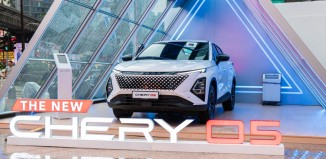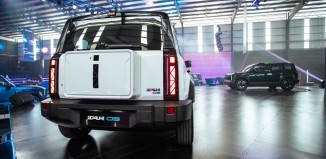Demand from emerging markets could spur development of in-car technologies
The last two decades have witnessed development of technology proceed at an unprecedented scale. This trend is similarly replicated in the automotive world; less time is now needed than it used to for innovations to trickle from a Mercedes S-Class to a Perodua Myvi. Not too long ago, 16 valves and twin camshafts were features worth writing about, but these days it’s all about turbocharging and direct injection.
As evidenced by the widespread availability of smart phones, technology is becoming increasingly affordable, and it will be even more so as the number of adopters grow bigger giving even better economies of scale. We refer to such developments as the democratization of technology. Motorists of today are becoming increasingly educated and affluent, and this in turn has spurred growing interest in in-car technology.
A survey conducted by Accenture has shown that drivers are twice as likely to choose a car based on in-vehicle technology options than its performance. In other words, it is twice as likely that buyers of the Ford Focus bought their vehicles for its Ford SYNC, blind spot warning, and self-parking system than they did for its Control Blade rear suspension.
Accenture polled 14,000 drivers from Brazil, China, France, Germany, Indonesia, Italy, Malaysia, South Africa, South Korea, Spain, the UK and the United States on their usage of vehicle features such as navigation and traffic services, autonomous driving aids, infotainment systems, safety services, black box-type recording devices (for insurance premium reduction), and a number of passenger related services. The survey sought to examine the current usage and future expectation of drivers on these systems.
Results of the poll showed that 39% of drivers put in-car technology as their primary consideration when choosing a new vehicle, as opposed to 14% who cited driving performance as their most important criteria. (What, no mention of resale value?) Drivers from China, Brazil, Indonesia, Malaysia, and South Africa (in that decreasing order) were found to have the greatest interest in connected vehicle technologies both in their current usage as well as future expectations.
Luca Mentuccia, global managing director for Accenture’s Automotive practice highlighted that increasing demand of such technologies from emerging markets combined with existing demand from mature markets will help spur the roll out of even newer versions of these technologies both in terms of speed and cost of development. “This is especially significant considering that nearly 40 percent of drivers surveyed indicated that in-car technology is the primary factor they consider in purchasing a new car,” Mentuccia noted.
Accenture’s survey also tackled the hot topic of driverless cars and autonomous driving aids, with 90% of respondents stating interest in such features, particularly if they are safety related. The most popular features include lane-changing warning systems, collision-warning systems, lane-keeping systems, autonomous emergency braking systems that prevent hitting an object and fully automatic parking. It is worth noting that Euro NCAP has made autonomous emergency braking a prerequisite feature for a vehicle to obtain a five-star rating.
Malaysian drivers, it was found, have a particularly strong interest in automatic parking assist systems. Current models in our market with such a feature include the Ford Focus, Volkswagen Sharan, and the recently-facelifted Mercedes-Benz W212 E-Class. Ford’s system is only able to help with parallel parking whilst the VW and Mercedes systems handle both parallel and reverse parking slots. Additionally, the majority of Malaysian respondents also said they wanted a system that stops the car and automatically sends out an emergency call in the event of an emergency.
The research also uncovered strong interest among consumers in vehicle health reports and life-cycle management services generated by on-board diagnostic tools. Accenture sees a potential revenue stream worth tapping into by OEMs setting up infrastructure to support maintenance-related digital services. Mentuccia describes a system which enables the OEMs to monitor the engine performance of vehicles subscribed to such services in real time and accordingly advise their customers to bring their vehicles in for the necessary repairs and maintenance. The implications for such technologies are huge, as the data will enable more streamlined processes and parts inventorying on the dealer’s side and a better-tailored customer experience; the conspiracy theorists may beg to differ.
“However, as drivers increase their demand for next-generation connected vehicle technologies across navigation, infotainment, safety, autonomous driving and mobile device integration, vehicle manufacturers face a challenge in being able to meet the complex integration requirements of a broad array of technologies in each range of vehicles. They must also look at maximizing sales by incorporating the right technologies into the appropriate vehicle range in each country,” Mentuccia further noted.
“Connected vehicle technology is rapidly becoming a key car-purchasing criterion,” Mentuccia said. “As a result, it also is dominating much of the industry’s advertising campaigns. Going forward, consumer expectations for better technology will require that manufacturers provide more customized, interactive websites to better aid consumers in making car-buying decisions. Accenture research has shown that the industry needs to consider adopting digital innovations, such as web chat and mobile-enabled websites, to enhance consumers’ digital shopping preferences.”























